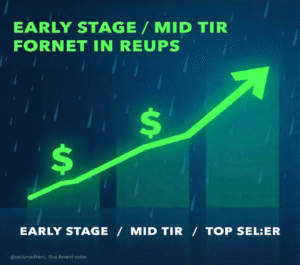Intro:
Let’s analyze this from a more technical perspective—no fluff, just the mechanics and strategic intricacies that can genuinely influence a first-time freelancer.
What Exactly Is Fiverr’s Value Proposition?

Fiverr works as a digital freelance marketplace, structured around microservices (“gigs”) that normally start at $5, but can scale up with bespoke pricing. It’s a worldwide platform, supporting enormous user numbers in South Asia, the US, Europe—essentially anywhere with an internet connection. The architecture is straightforward: you offer a service, buyers search and place orders and the platform handles both payment and dispute resolution.
Key differentiators? No credential barriers. You’re not submitting CVs, nobody’s asking for transcripts. Your “portfolio” is your gig profile and the samples you upload. This democratization of chance is why Fiverr’s such an on-ramp for folks with uneven backgrounds or no past freelance record.
Why Should Technical Newcomers Target Fiverr?
Zero Credential Dependency:
The system is agnostic to degrees, qualifications, or past client lists. You’ll be evaluated based on your gig clarity, pricing, and lastly, your reviews.
Service Category Breadth:
Over 500 verticals, varied from high-skilled jobs (custom coded programming, UI/UX design) to entry-level (data entry, simple copywriting). You may iterate and experiment across categories.
Payments:
Fiverr has Payoneer, local bank transfers, and PayPal (region-dependent). This adds a significant reduction of friction for freelancers in Pakistan, India, and other emerging countries.
Technical Onboarding: The Step-By-Step

1. Registering:
Low KYC. You can sign up with your email or Google account, and you can complete ID verification if you want to withdraw an amount higher than a certain region or location.
2. Optimization for Seller Profile:
This is essentially your landing page. Upload a high-res image (no selfies, but a professional image), and write a bio, using SEO-related principles. Use terms that relate to the skills you claim expertise in, but don’t overdo it with spam-like key wording.
3. Gig Creation:
This is where it is all about technicality. Use the wording in the gig title with searching in mind (“I will design a custom Shopify landing page” and not simply “Landing Page Design”). Utilize Fiverr’s tiered pricing to upsell by offering a basic package with limited capabilities, which will still be beneficial to the customer. This will then lead to the closure of the lowest tier of the package, resulting in premium deliveries with enhanced capabilities.
4. Portfolio Examples:
Build a sample work to provide to the client, even if you are a new seller. The portfolio examples could be Canva mock-ups for design, Google Docs for writing, Audacity for audio, or any other demos that you can build.
5. Promotion & Algorithm Finding:
Fiverr’s algorithm likes completed gigs and completed and quickly responded to gigs, amongst other things. Do not rely only on organic; create your demand funnel and advertise your gig on platforms like LinkedIn, WhatsApp, Discord groups, and specific niche boards.
6. Delivery:
Beyond pre-emptive communication- (progress reports) at set milestones as opposed to at the point of delivery- all deliverables should go through version control (develop a change history using Dropbox, Google Drive, etc).
7. Withdrawals & Payments:
After a 14-day float, your money is available to you. You should probably be informed that there are withdrawal amounts, but withdrawals are safe and fees are known.
For SEO, employ free keyword research tools (Ubersuggest, Google Keyword Planner).

- Canva Graphics: No requirement for Adobe Suite expertise—Canva’s templates and assets are suitable for most social media and marketing purposes.
- Voiceovers: A basic USB mic and Audacity program will get you started. Fiverr enables language and accent specialization—niche down for higher visibility.
- Entry-Level Video Editing: Tools like CapCut or DaVinci Resolve (free version) are more than enough for simple cuts, intros, and social reels.
- Data Entry & Virtual Assistance: Familiarity with Google Sheets, Excel, and Trello will cover the majority of beginner gigs.
- Website/App Testing: No coding required. Offer organized feedback—follow UX guidelines, run through test cases, and provide annotated screenshots.
Sustaining Growth: Advanced Techniques

SEO-Based Gig Optimization:
Research top sellers in your specialization. Deconstruct their keywords and descriptions. Utilize Fiverr’s analytic dashboard to see impressions and clicks—not all gigs with high impressions will convert to clicks, so iterate if your gig isn’t converting.
SLA’s and Communication:
Respond within 60 minutes if possible. Use Fiverr’s mobile app to remain more responsive to buyers. The algorithm will reward vendors who are active and penalize vendors with long response times to messages.
Review Engineering:
Politely ask for comments after successful deliveries. The higher the rating, the more exposure you will gain, plus you have access to Fiverr’s “Rising Talent” and “Level 1 Seller” badges, both of which will yield more buyers.
Dynamic Pricing:
Start below market price, but set a schedule that defines how and when you will gradually increase your prices as you accumulate reviews.
Earning Trajectory: What is Realistic?

Early-Stage Sellers:
As a part-time and steady gig seller, expect to earn $5-20/gig, and regularly take home $50-300/month.
Mid-Tier:
If you have 20-30 reviews, it is reasonable to have $200-500/month in revenue, particularly if you upsell or bundle services together.
Top Sellers: It is possible to have $1,000+/month, but you will be required to be specialized, continuously improve your gig, and use some measure of automation (response templates, workflow checklists).
Security and Legitimacy for South Asian Users
Fiverr is compatible with international payment rules, and there’s no need for VPN workarounds or dodgy intermediaries. The site is packed with regional merchants, and you can join local Facebook groups or YouTube communities for peer support, gig audits, and real-time troubleshooting.
Conclusion: Fiverr as a Technical Launchpad

For anyone with baseline digital skills, Fiverr isn’t simply a side hustle—it’s a scalable entry point into the gig economy. The platform’s frictionless onboarding, transparent data, and low barrier to entry make it ideally suitable for anyone who wants to bootstrap a freelancing career without waiting for “permission” from traditional companies.
Bottom line? If you can follow directions, then it depends on client feedback, and treat your gigs like micro-businesses, Fiverr can undoubtedly be your launchpad. So, deploy your first gig—treat it as an MVP (minimum viable product)—and iterate. That’s how technical growth happens, even in freelancing.
